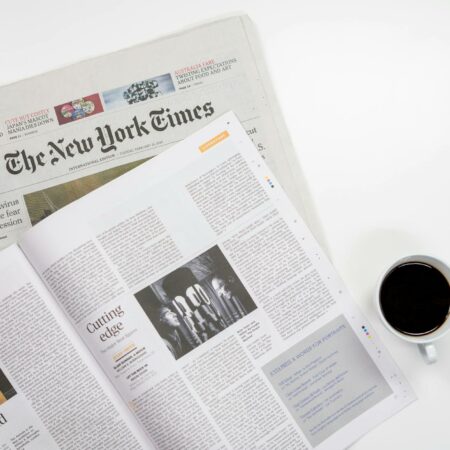There exists a tension between the creative and technical elements of a well-built website. While you always strive to create a beautiful website pleasing to the eye, you must also consider functionality, ease of use, accessibility, and keyword integration. All these aspects work together to produce an effective vehicle for your organization’s message.
Let’s discuss some areas where it’s wise to balance the creative and technical elements of your website.
Keyword optimization
Properly optimizing keywords for search engines typically requires more dense content on the page, but good design principles and a positive user experience lean toward using less copy. There is an art to writing with keywords. They must appear tastefully in the copy in a way that feels uninterrupted and natural so that the search engine can still understand what the story is about.
But never forget you’re writing for humans first. If your message gets lost in a sea of randomly placed keywords, you’ve not achieved the goal of your website, which is someone reading it! By producing clear, succinct copy targeted to both your human audience and the internet crawlers, you’ll succeed in providing both a great user experience and effective keyword optimization.
In our blog To Write for Search Engines or People: Which is Priority? We dive into how Google and other search engines are continuously changing their ranking factors to ensure they’re delivering the most valuable, relevant results for users.
“Over time, they have learned how human beings use language to find answers, and they continue to learn every day so they can perfect their algorithms. Because of this, search engines do not need people to write content that’s tailored around their algorithms; they exist to serve people and give them the content they’re looking for. If your content delivers relevant answers and value, they will reward you with a higher ranking.”
Lastly, get a talented marketing copywriter who has an understanding of SEO. A copywriter who knows how to artfully incorporate relevant keywords and optimize content for search engines can add significant value to your marketing efforts.
Animation
Creative animations can bring attention to your website but require technical know-how to make them run efficiently and effectively. Animations and cool interactions using technology can slow load time — and diminish search engine ranking — if not designed properly.
In fact, an over-designed site in general with too many busy elements can bog down both your message and your search engine placement. Let your content and imagery speak for themselves and remember that clarity is king! People typically spend about 3 to 5 seconds scanning a web page at a high level. You must draw them in quickly to communicate your desired message.
In our article Website Animations: When to Use Them & When They’re Too Much, we reiterate that when in doubt, remember the user experience.
“The main goal when it comes to animations should be to make your website feel more responsive and intuitive to your users’ actions. When executed correctly, animations can help your audience reach their goals and feel connected to your content. Your site’s animations should never distract, confuse, or frustrate your users, and they should encourage users to stay on your site longer, which will, in turn, help achieve your goals. Sometimes, less is more.”
Images
Pay attention to image sizing because large images also will slow your site’s load time. WordPress will do some image crunching as it uploads, but uploading images that are sized correctly in the first place is the best approach.
Accessibility
Certain design decisions can “ding” your accessibility rating, which is important to a successful, findable website. People who have impaired vision or hearing often use screen readers, and it’s important to design your site with that in mind. Our websites are tested against ADA criteria for basic WCAG 2.0 AA Standards.
In our article What Your Website Needs to Stand Out, we write that having an ADA-compliant website is more than just a part of a good customer service strategy; it can also increase your conversion rate, boost your SEO, and expand your reach.
Website elements that improve accessibility include:
- Creating strong color contrast between text and backgrounds
- Adding focus indicators, such as a line that shows up underneath word links when using keyboard navigation
- Adding functional alt text to all website images
- Not having links open in a new window without informing the user first
Finding the perfect balance between creative and technical website elements is an ongoing process. We recommend continuously analyzing user data, gathering feedback, and adapting your website to evolving trends and user needs. The beauty of a website over a printed brochure is that you can launch a website in iterations and incorporate feedback as you go. This approach keeps your website fresh, responsive, and attention-grabbing.





